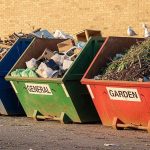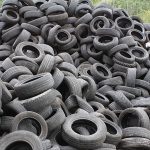Innovative Uses for Compost and Recycled Green Waste
As sustainable practices gain prominence across Australia, the use of compost and recycled green waste has grown beyond traditional gardening. Repurposing organic materials plays a crucial role in reducing landfill and promoting eco-friendly initiatives, and compost and green waste are now seen as valuable resources with a wide range of applications. From landscaping to erosion control, these materials are supporting a transition towards a circular economy.
This article explores innovative compost applications and green waste innovation, revealing how these materials are transforming environmental management practices across various industries.
Expanding Compost Applications Beyond the Garden
Historically, compost has been associated with enriching garden soil and supporting home-grown produce. However, applications for compost now span multiple sectors, proving it to be a versatile and sustainable material.
In commercial landscaping, compost is added to topsoil to provide vital nutrients and improve water retention, and councils and developers are integrating compost into greening initiatives to support the health of newly planted trees and shrubbery in parks and along roadsides. This approach not only enhances plant growth but also reduces the need for chemical fertilisers, which can negatively affect surrounding ecosystems.
Compost is also used in large-scale turf management, such as on sports fields and golf courses, where soil health is vital for durability and appearance. These applications demonstrate the role of compost as a sustainable alternative, contributing to environmentally responsible landscaping practices.
Green Waste Innovation in Erosion Control
Erosion is a significant issue in many parts of Australia, especially in areas affected by construction, agriculture, or deforestation. Traditional methods of erosion control often involve the use of synthetic materials or costly infrastructure. However, green waste innovation has introduced compost-based erosion control techniques that are both cost-effective and environmentally sound.
One such method is the use of compost blankets, which are layers of compost spread over exposed soil to protect against wind and water erosion. These blankets help stabilise the soil while encouraging vegetation growth by providing essential nutrients and microbial activity. In areas recovering from bushfires or land clearing, compost blankets are particularly useful for re-establishing plant cover and restoring natural landscapes.
In addition, compost-filled filter socks are used along construction sites and roadways to capture sediment and prevent it from entering stormwater systems. These solutions make use of recycled green waste, reducing the demand for virgin materials and decreasing the environmental impact of infrastructure projects. Through the use of these techniques, erosion control not only encourages damage prevention but also landscape restoration and sustainability.
Supporting Agriculture Through Circular Economy Practices
Agriculture remains one of the largest producers and users of organic waste, and implementing circular economy principles within the industry can help close the loop by turning agricultural waste into high-quality compost that can be reused on the land. This process reduces waste, improves soil health, and decreases reliance on synthetic fertilisers.
Compost made from recycled green waste is rich in organic matter and helps improve soil structure, increase microbial activity, and enhance moisture retention. These benefits are crucial in Australia’s dry regions, where water conservation and soil resilience are key concerns. Farmers are increasingly recognising the value of compost not only for improving crop yields but also for restoring degraded soils and increasing their land’s long-term productivity.
By incorporating green waste into farming systems, producers are actively participating in a circular economy that values resources and reduces environmental harm. This innovation is not only improving agricultural outcomes but also building more sustainable rural economies.
Green Waste Innovation in Environmental Rehabilitation
Environmental rehabilitation projects, such as those addressing mining sites, landfills, and degraded bushland, have begun to incorporate compost and recycled green waste into their strategies. The biological richness of compost plays a pivotal role in revitalising depleted soils and promoting the re-establishment of native vegetation.
In former mining areas, compost is used to rebuild topsoil layers and support the growth of native species. The addition of green waste products improves soil aeration and provides a habitat for beneficial organisms, accelerating the natural recovery process. In landfill capping and rehabilitation projects, composted materials are laid over sealed landfill sites to foster vegetation growth and minimise erosion and water runoff.
These practices demonstrate how green waste innovation contributes not only to the aesthetic recovery of landscapes but also to the regeneration of biodiversity and ecosystem services. Environmental agencies and private contractors alike are turning to compost as a reliable and ecologically sound solution in large-scale land management.
Compost Applications in Urban Development
Urban development presents a unique set of challenges related to soil degradation, heat retention, and limited green space. Compost applications in urban settings are helping address these challenges by supporting green infrastructure and sustainable construction methods.
For example, green roofs and living walls use compost-based substrates to provide the necessary nutrients for vegetation while maintaining lightweight properties suitable for building structures. These green features offer cooling benefits, reduce stormwater runoff, and improve air quality, contributing to healthier urban environments.
Moreover, community garden projects and urban agriculture initiatives frequently rely on compost to revitalise compacted soils and support food production in underutilised city spaces. In these contexts, compost promotes both environmental and social sustainability by engaging communities in local food systems and waste reduction efforts.
Through these applications, cities are not only reducing the volume of green waste sent to landfill but also improving liveability and resilience in the face of climate change.
Innovative Uses for Compost and Recycled Green Waste
The use of compost and recycled green waste has expanded beyond traditional gardening, with applications now spanning agriculture, landscaping, erosion control, urban development, and environmental rehabilitation. These innovative uses are reshaping how Australia manages organic waste and contribute to a more sustainable and circular economy.
As more industries and communities recognise the value of these resources, the demand for high-quality compost and green waste processing is set to grow. Embracing these materials as tools in sustainable development is not only important for the environment, but also practical and forward-thinking when facing a variety of challenges.
At the Adelaide Waste and Recycling Centre, we are committed to supporting green waste innovation and promoting responsible waste management. Whether you’re a homeowner, landscaper, or developer, we ask that you consider compost for your next project. Contact us today on 08 8295 5077 or via our contact form to find out more.
Adelaide Waste and Recycling Centre
Our friendly operators are available at the AWRC if you need to clarify any further information.


